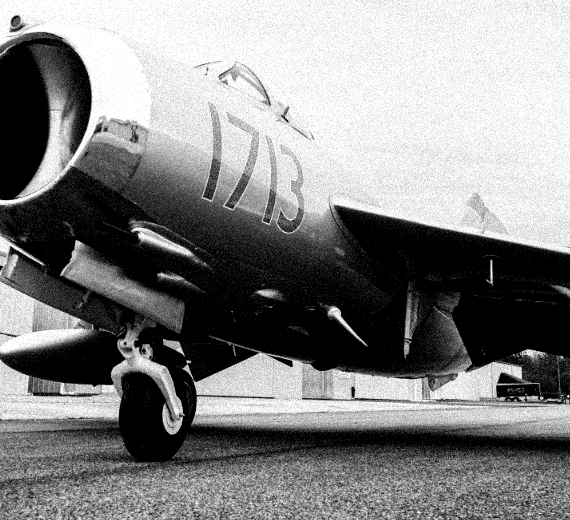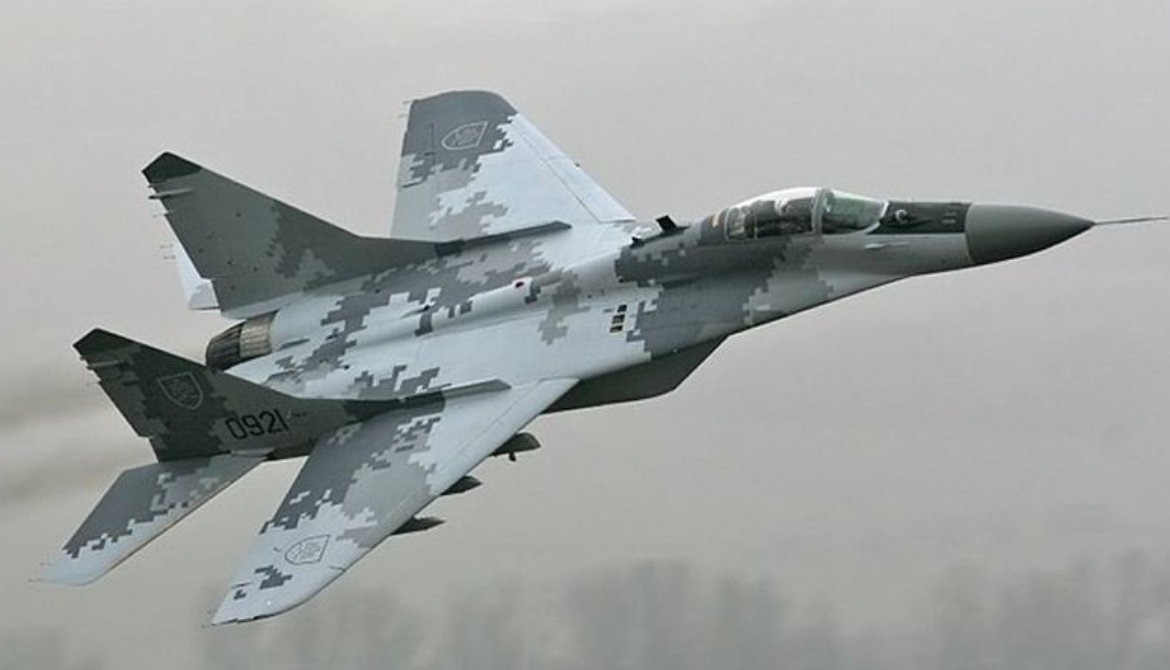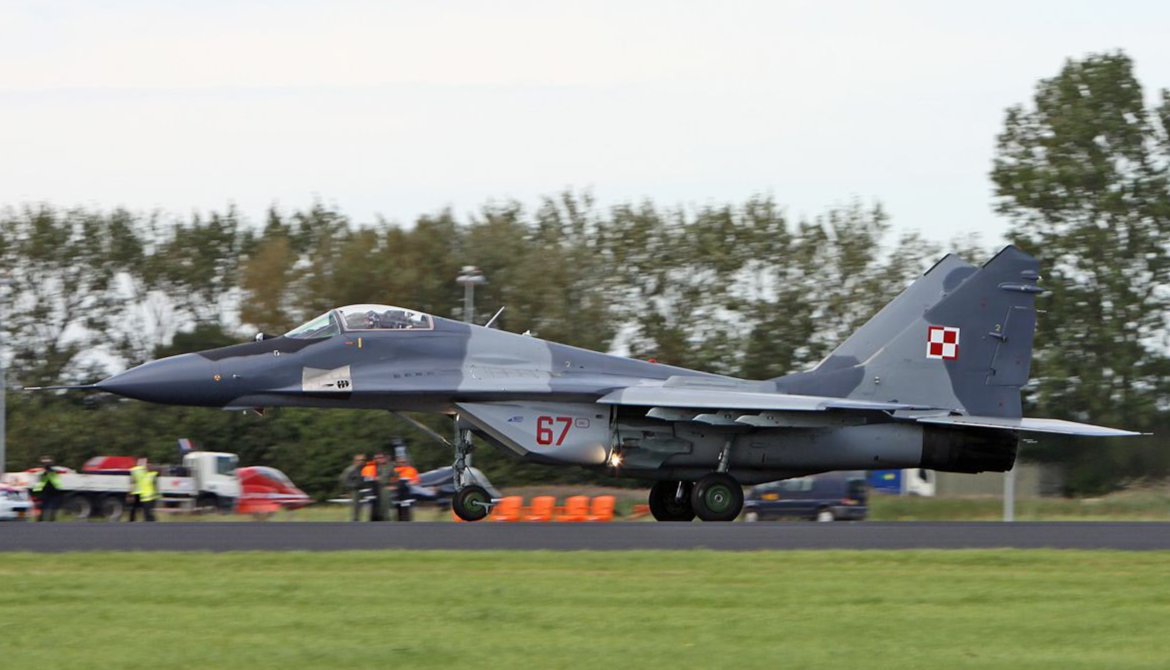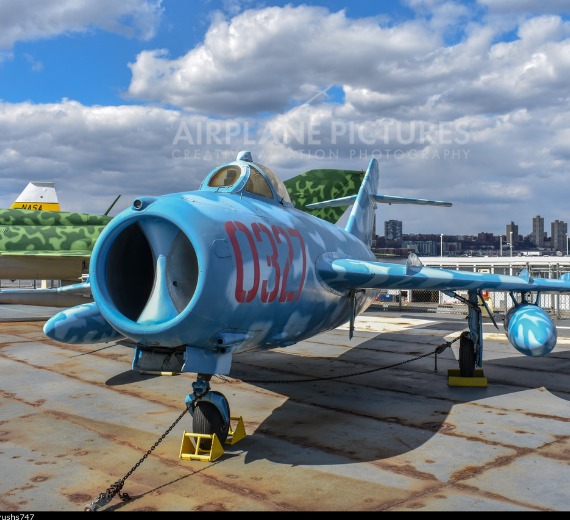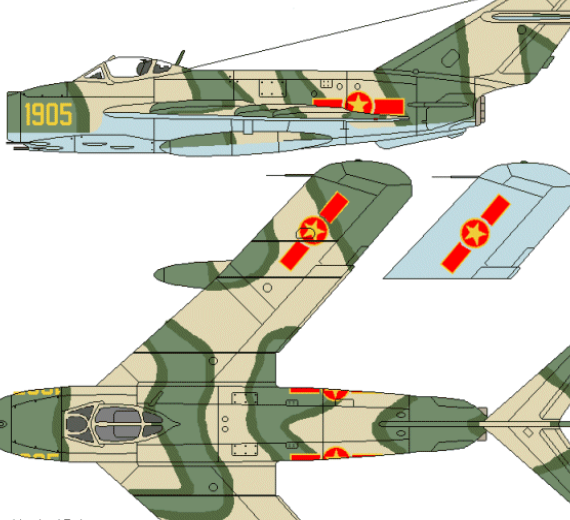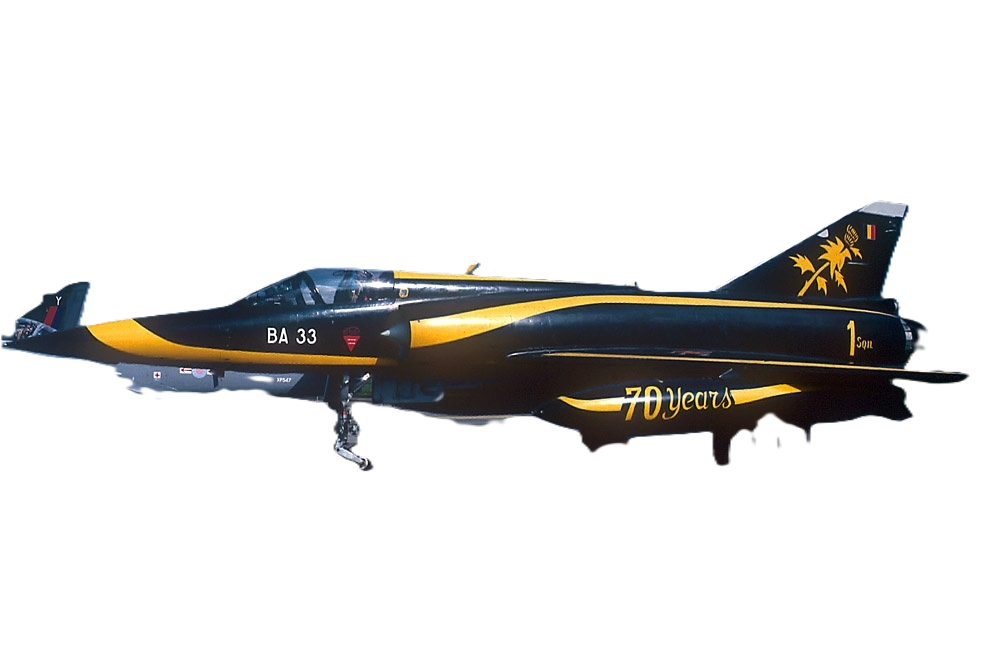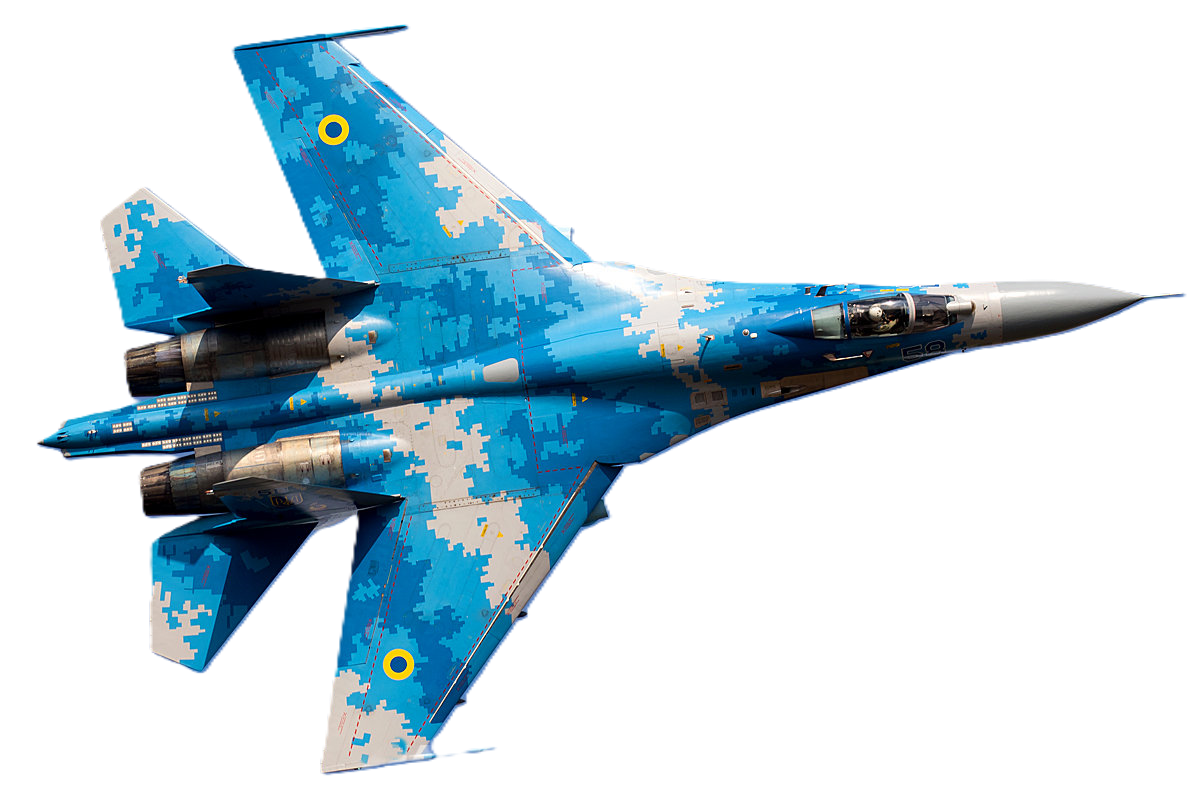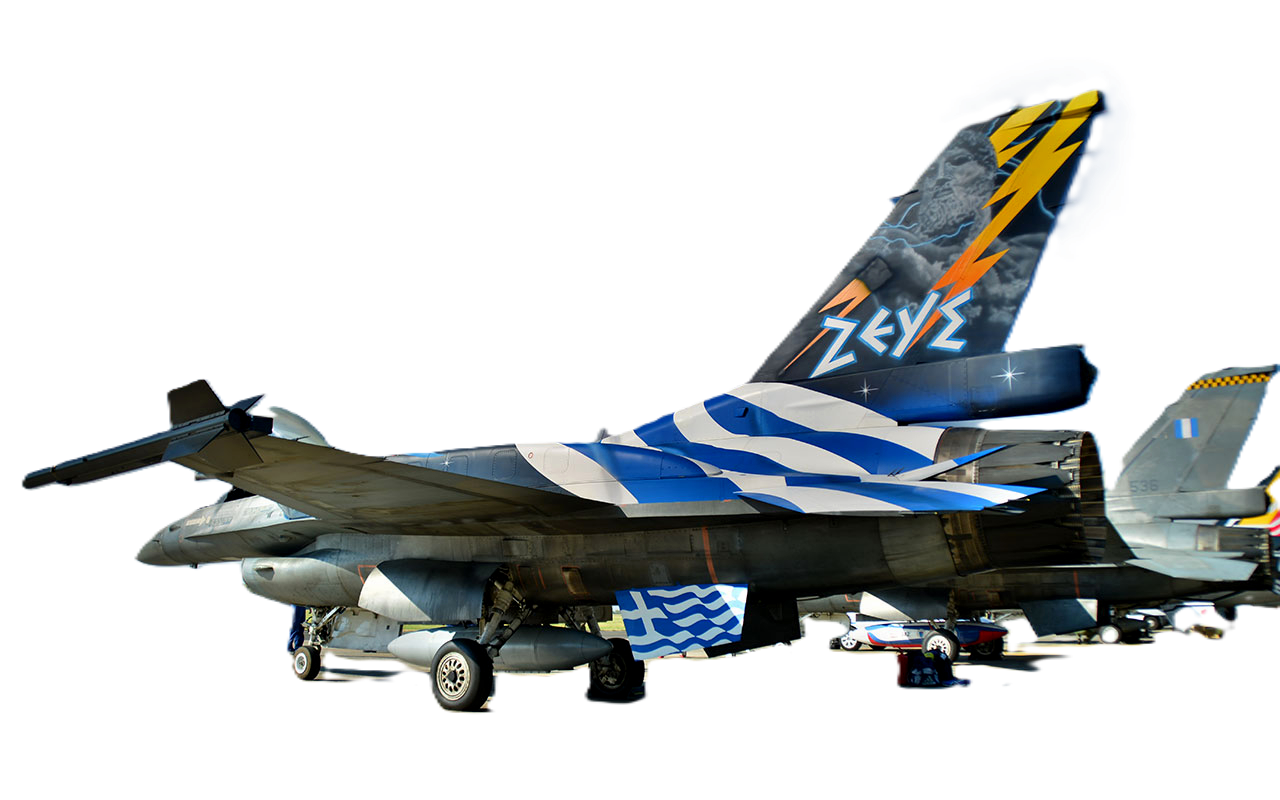Russian Aircraft "Mig"
MiG-17 Fresco
 |
|
| A restored MiG-17 | |
| Role | Fighter aircraft |
|---|---|
| National origin | Soviet Union |
| Manufacturer | Mikoyan-Gurevich |
| First flight | 14 January 1950 |
| Introduction | October 1952 |
| Status | In limited service |
| Primary users | Soviet Air Forces (historical) People's Liberation Army Air Force (historical) Polish Air Force (historical) Vietnam People's Air Force (historical) |
| Number built | 10,649 including Polish, Czech and Chinese variants |
| Developed from | Mikoyan-Gurevich MiG-15 |
| Variants | PZL-Mielec Lim-6 Shenyang J-5 |
| Developed into | Mikoyan-Gurevich MiG-19 |
|
|
.
History Russian Aircraft Corporation "Mig"
Mikoyan MiG-17 NATO reporting name: Fresco
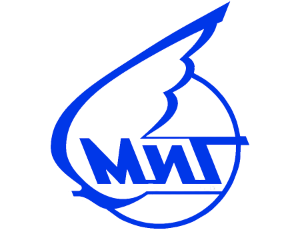
The MiG-17 was an advanced modification of the MiG-15 aircraft produced by the Soviet Union during the Korean War. Production of the MiG-17 was too late for use in that conflict and was first used in the Second Taiwan Strait Crisis in 1958. While the MiG-17 was designed to shoot down slower American bombers, it showed surprising success when used by North Vietnamese pilots to combat American fighters and fighter-bombers during the Vietnam War, nearly a decade after its initial design. This was due to the MiG-17 being more agile and maneuverable than the American F-4 Phantom and F-105 Thunderchief, which were focused on speed and long range combat, as well as the fact that MiG-17 was armed with guns, which initial models of the F-4 Phantom lacked
Design

The Mikoyan-Gurevich MiG-17 (Russian: Микоян и Гуревич МиГ-17; NATO reporting name: Fresco)[1] is a high-subsonic fighter aircraft produced in the Soviet Union from 1952 and was operated by air forces internationally. The MiG-17 was license-built in China as the Shenyang J-5 and Poland as the PZL-Mielec Lim-6. The MiG-17 is still being used by the North Korean air force in the present day and has seen combat in the Middle East and Asia.
Other easily visible differences to its predecessor were the addition of a third wing fence on each wing, the addition of a ventral fin and a longer and less tapered rear fuselage that added about one meter in length. The MiG-17 shared the same Klimov VK-1 engine, and much of the rest of its construction such as the forward fuselage, landing gear and gun installation was carried over. The first prototype, designated I-330 "SI" by the construction bureau, was flown on the 14 January 1950, piloted by Ivan Ivashchenko.
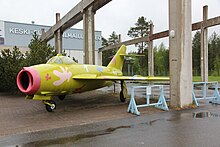

0
KmCeiling
0
KmCombat RANGE
0
MachAircraft Speed
0
Max Crew
Photo Gallery
Russian Aircraft Corporation "Mig"
Mikoyan MiG-17 NATO reporting name: Fresco


Russian Aircraft Corporation "Mig"
Mikoyan MiG-17 NATO reporting name: Fresco
General Info
-
-
-
-
- Crew: 1
- Length: 11.264 m (36 ft 11 in)
- Wingspan: 9.628 m (31 ft 7 in)
- Height: 3.8 m (12 ft 6 in)
- Wing area: 22.6 m2 (243 sq ft)
-
-
-
Powerplant
-
-
-
-
- Empty weight: 3,919 kg (8,640 lb)
- Gross weight: 5,340 kg (11,773 lb)
- Max takeoff weight: 6,069 kg
- Powerplant: 1 × Klimov VK-1F afterburning centrifugal-flow turbojet engine, 26.5 kN (6,000 lbf) thrust dry, 33.8 kN (7,600 lbf) with afterburner
-
-
-
Performance
-
- Maximum speed: 1,100 km/h (680 mph, 590 kn) M0.89 at sea level
-
-
- 1,145 km/h (711 mph; 618 kn) / M0.93 at 3,000 m (9,800 ft) with reheat
-
- Range: 2,020 km (1,260 mi, 1,090 nmi) at 12,000 m (39,000 ft) with 2 × 400 L (110 US gal; 88 imp gal) drop-tanks
- Service ceiling: 16,600 m (54,500 ft)
- g limits: +8
Armament
- Guns: **2 × 23 mm (0.906 in) Nudelman-Rikhter NR-23 autocannon (80 rounds per gun, 160 rounds total)
- 1 × 37 mm Nudelman N-37 autocannon (40 rounds total)
- Hardpoints: 2 pylons with a capacity of up to 500 kg of stores, with provisions to carry combinations of:
- Rockets: 2 × UB-16-57 rocket pods for S-5 rockets
- Bombs: 2 × 250 kg (550 lb) bombs
.
Links to Youtube & Others
MiG-17s were designed to intercept straight-and-level-flying enemy bombers, not for air-to-air combat (dogfighting) with other fighters. This subsonic (Mach .93) fighter was effective against slower (Mach .6-.8), heavily loaded U.S. fighter-bombers, as well as the mainstay American strategic bombers during the MiG-17's development cycle (such as the Boeing B-50 Superfortress or Convair B-36 Peacemaker.
Russian Aircraft Mig
MiG-17 Fresco
The MiG-17 was the primary interceptor of the fledgling VPAF in 1965, responsible for their first aerial victories and seeing extensive service during the Vietnam War.
Youtube Link
USAF Chief of Staff General John P. McConnell was "hopping mad" to hear that two Mach-2-class F-105s had been shot down by Korean War-era subsonic North Vietnamese MiG-17s

